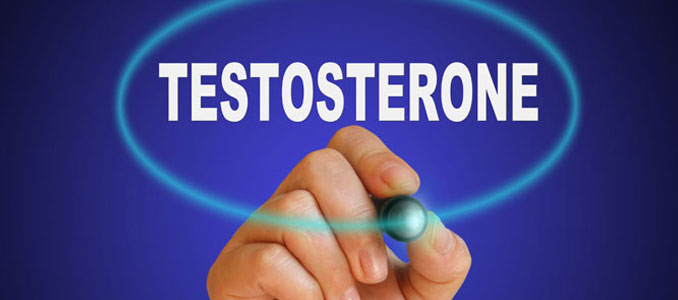Low T Treatment with Testosterone Pills
Men have a number of superior options for the treatment of Low T, and testosterone pills are not one of them. Testosterone can be introduced into the body in a number of different ways – intramuscularly, transdermal, transbuccal, implantable, and orally (not recommended).
There are no real benefits of testosterone pills due to the potential serious risk factor they possess. The way in which testosterone pills are processed by the liver can cause numerous dangers, and these far supersede any possible benefits, especially when there are significant other methods of treating Low T.
Side Effects of Testosterone Pills
- Lipid disturbances
- Hepatic adenoma
- Liver toxicity
- Increased risk of cholestasis
Just as with men, there are no testosterone pills for women. A woman who has been diagnosed with low levels of testosterone – typically during menopause or following hysterectomy – will most likely be provided with a compounded testosterone cream.
The Best Method of Treating Low Testosterone
Due to the inherent testosterone pills side effects, there are many other options that are more suited to providing superior results for men with Low T. Far and away, the most highly recommended choice of doctors is testosterone injections. Not only does this method of increasing testosterone provide the best results, but it is also usually the most cost effective way of reversing the symptoms associated with a decline in testosterone production that occurs in later years.
Options for Low T Treatment
- Intramuscular – Injectable testosterone is most often prescribed as testosterone cypionate or testosterone enanthate. An injection is administered once every one to two weeks depending upon the doctor’s determination of what is needed. Testosterone propionate injections are rarely prescribed as they are most often used for extreme short-term use in high-deficiency situations. The body readily absorbs injectable testosterone into the bloodstream over an extended period of time.
- Transdermal – Patches and gels deliver testosterone transdermally – through the skin. The biggest concern here is that each person will absorb testosterone through the skin differently, so doctors must monitor the results of this method more carefully at times than with other forms of Low T treatment.
Scrotal Patches – the scrotum must be shaved prior to use. Poor adherence caused by sweating and friction is often a problem. Irritation and discomfort are frequently noted.
Non-Scrotal Patches – patches are typically applied to the upper thighs, abdomen, back, or upper arms, and no area should be repeated within 7 days. There is a greater incidence of skin irritation from these patches. The skin does not readily absorb testosterone, and permeation enhancers are used in the patches to increase absorption.
Gel – unlike prescription testosterone pills that create more problems than they do benefits, testosterone gel was designed to improve the transdermal application of Low T treatment. Unfortunately, it is also the most costly of all forms of testosterone therapy. Testosterone gel requires application to the shoulder, upper arm, or abdomen. It takes approximately 10 minutes to dry fully, and the area treated must remain covered with clothing for at least 2 hours. Swimming or bathing require a wait time of 2 to 6 hours depending upon the brand used. There is a reduced risk of skin irritation, but a greater likelihood of cross-contamination of others. For that reason, this method is not often recommended as the first choice for men with young children at home.
- Transbuccal – 30 mg testosterone tablets are applied twice a day to the gum tissue above the incisors, where testosterone will be slowly absorbed and transported into the superior vena cava by the buccal venous system. This enables early avoidance of hepatic (liver) metabolism as opposed to male testosterone pills that can have a severe effect in this area. Some men report issues with gum or mouth irritation, bitter taste, or tenderness. There is a risk of swallowing while eating, or transference and cross-contamination during kissing or sharing of beverages (transfer of saliva).
- Implantable – Testosterone pellets are certainly superior to testosterone pills for men, but still not often recommended for use by doctors. Anywhere from 2 to 6 pellets are required for implantation, and they provide slow release over a period of 4 to 6 months. Due to the need for surgical implantation, usage of these pellets can be painful, and a higher rate of extrusion makes them an unlikely choice, especially for older men.
- Long-Acting Injectable – although not yet approved for use in the US, a long-acting intramuscular injectable TU is currently under phase III trials. The recommended treatment would be every 10 to 14 weeks.
- Oral – the use of testosterone pills is once again not recommended due to liver (hepatic) toxicity.
- Creams – testosterone in cream form is typically prescribed for women due to its much lower dosage.
Get Doctor Prescribed Testosterone Therapy
When a person is looking to get treatment for Low T, it is not recommended that prescription or over the counter testosterone pills are considered. As with many forms of hormone replacement therapy, there is an ever-growing black market available online for these treatments. The purchase of medication in this way can be extremely dangerous, not to mention illegal.
It is important to turn to a doctor who specializes in hormone replacement in order to avoid the dangers of low testosterone pills or other counterfeit forms of testosterone treatment.
Choosing the right type of testosterone treatment requires an open and honest discussion with a medical expert who can offer suggestions and guidance as to what is the best option for each person. Blood testing is also required in order to determine who is a candidate for Low T treatment, and this will also shed light on which form of therapy might be best suited to each person’s needs.
At National HRT, we take pride in providing our clients with the best options in hormone replacement therapy. From diagnostic testing to guidance to choosing the right treatment for each person, we are there every step of the way. Please call us for a free phone consultation.



